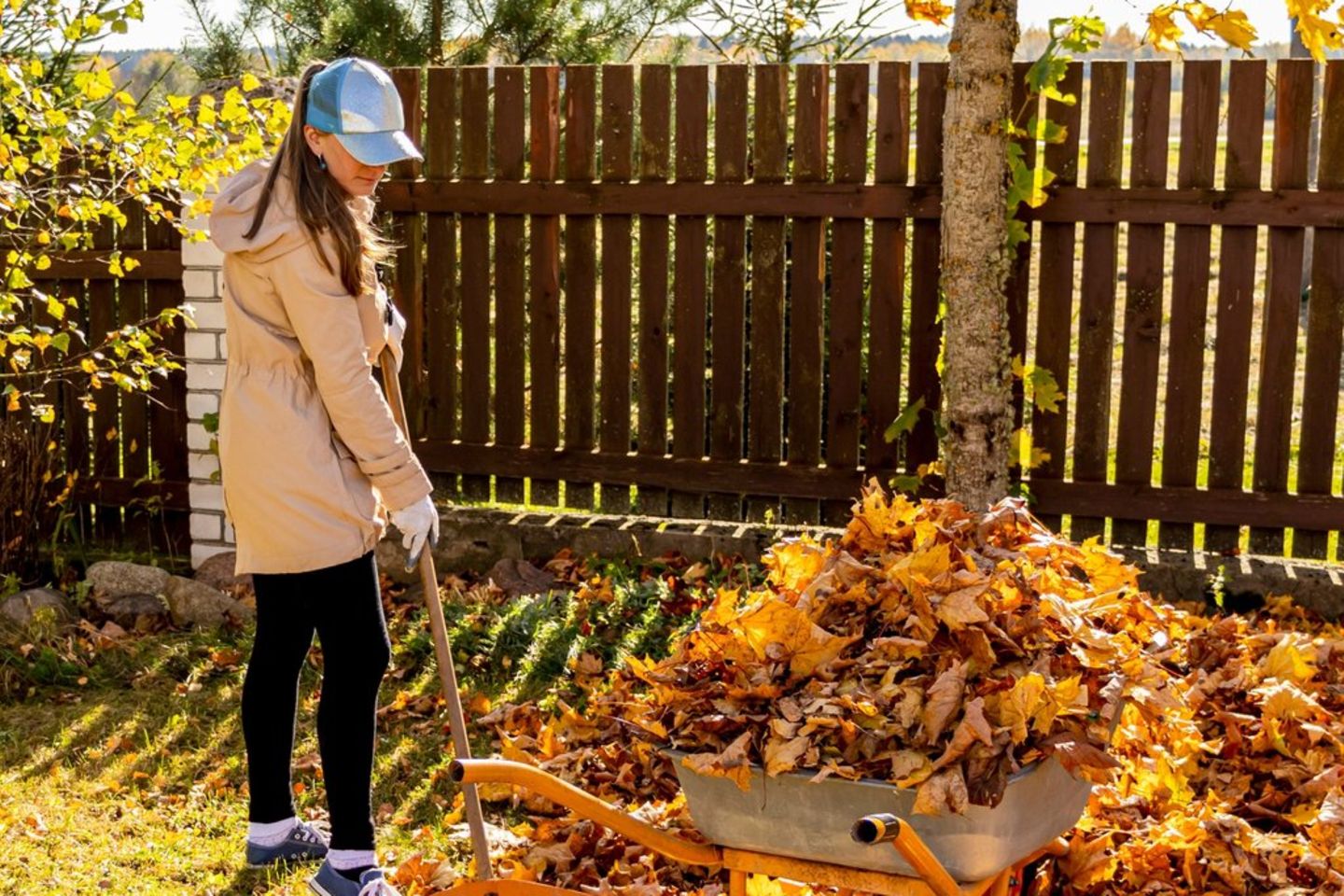Gardening in autumn
This is how you dispose of leaves, branches, etc. correctly
There is a lot to do in the garden in autumn.
© J_Koneva/Shutterstock.com
After the trees have shed their clothes, it’s time to clean up the garden. This is how you dispose of leaves, branches, etc. correctly.
Once the trees have lost their colorful clothes, there is a lot for gardeners to do. Because the garden needs to be well prepared for winter. In many places, towers of leaves and old branches have to be disposed of. However, for the sake of the environment, waste should not be disposed of arbitrarily. This applies to the Autumn gardening to consider.
How are packaging and empty plant pots disposed of?
Empty plastic plant pots, transport trays or bags in which the potting soil was: They are intended for the yellow bin or yellow bag. This includes all lightweight packaging made of plastic, aluminum, Styrofoam, composite materials or tinplate. Everything made of paper and cardboard, such as transport boxes, should go in the waste paper bin.
Where to put planters and flower boxes?
Have some flower pots or flower boxes been damaged over the past few months and need to be sorted out? Basically, planters and decorative pots made of plastic are disposed of with residual waste. This also applies to items made from natural materials such as wood or clay. Smaller products such as floral wire or plant clips made of plastic and metal also end up in the residual waste bin.
If you have a lot of containers to dispose of, you can take the metal or plastic leftovers from the summer to the recycling center or to the bulky waste. It is important that the pots and boxes are emptied. The items are professionally recycled at the recycling center. Discarded tools such as rakes, wheelbarrows or shovels also belong in the bulky waste or recycling center.
Where do leaves and biological waste belong?
Fallen leaves are of course organic waste. Even smaller branches or fallen fruit end up in the organic waste bin – just like flowers and other plants that don’t overwinter. If you want, you can add some of the leaves to the compost.
Fertilizers and pesticides in hazardous waste?
The situation is different with fertilizers and pesticides. They are not allowed in the household waste. If the plastic packaging for chemical substances is completely empty, they go into the yellow bin or yellow bag. Caution: If there is still some residual liquid in the bottles or spray cans, they must not be tipped into the toilet or sink. Here it is important to dispose of the packaging as hazardous waste.
